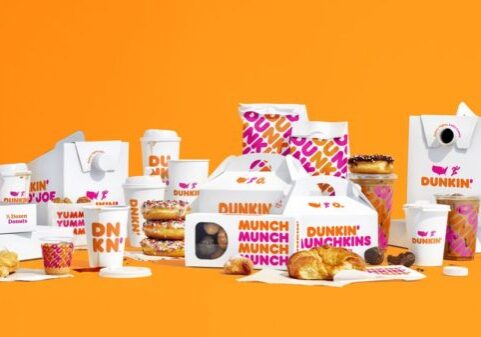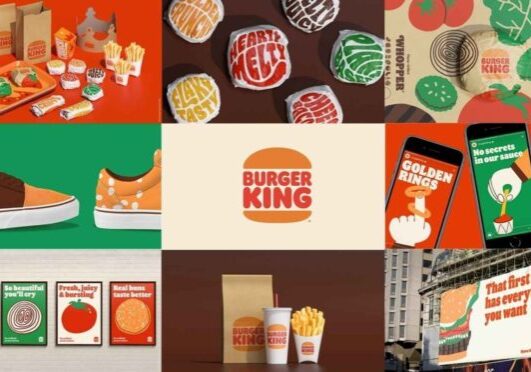Flexographic printing is a form of direct relief printing that is characterized by the use of flexible printing plates. In the past, these printing plates were always made of rubber, whereas today, flexible photopolymer printing plates might also be used. These plates have a slightly raised image of the content on them, they’re inked, and are rotated on drums at high speeds to transfer the image onto the print substrate. Each color of ink desired requires a different printing plate. For instance, traditional process printing requires a plate for each ink: cyan, magenta, yellow and black — or CMYK.
Flexography is adaptive and can accommodate a wide range of inks, like UV or water-based – and may be used on a huge range of media including absorbent substrates like paper, fabric, or cardboard, as well as non-absorbent substrates like plastic, cellophane and metallic film. It is a popular printing technique when versatility, large orders, or long print runs are desired. It’s also great for things like wrapping paper or wallpaper!

How Dunkin’ Successfully Rebranded in 2019
The history of Dunkin’ began with a restaurant called “Open Kettle” in Massachusetts, in 1948. Founder William Rosenberg served donuts for five cents and premium cups of coffee for ten cents. Rosenberg renamed his restaurant “Dunkin’ Donuts” in 1950, and franchised his brand in 1955. Since 1950, the number of Dunkin’ restaurants has increased to…

The Importance of a Social Media Presence
Social media has become an integral part of our lives, with billions of people across the globe using these platforms to connect, engage, and share content. For businesses, social media provides a powerful opportunity to build brand awareness, connect with customers, and drive growth. In today’s competitive marketplace, having a social media presence is no…

How Good Branding Saves Your Company Money
Many businesses make the mistake of throwing money at marketing without thinking enough about their brand, as a whole. Paid media campaigns might garner attention, but they can’t necessarily retain it and convert as many customers without solid branding. A company with a consistent, strong perception amongst audiences will always outperform competitors with the same…

5 Ways a Well-Built Brand Makes Your Company Money
We all know standing out in a crowded market is essential for success. One way to do that is by creating and maintaining a well-built brand. After all, your brand is more than just a logo and a tagline, it’s the image and perception that customers have of your business. A strong brand sets you…

A Brand Refresh fit for a (Burger) King
Not too long ago, Burger King underwent a major brand refresh not too long ago! They hadn’t rebranded since 1999, and this new rebrand feels super fresh and juicy. At first glance, some may think they simply returned to their most successful old logos, of which appeared in 1969 and 1994 – but it’s so…

Flexible vs. Fixed Agency Pricing
Understanding the Key Advantages of Selecting a Digital Agency with Flexible Pricing vs. a Traditional Agency with Fixed Pricing. When it comes to selecting an agency meant to augment a marketing team or department, it’s critical to understand the limitations pricing models create or eliminate. Businesses must find an agency partner that understands their brand’s…

Comical Global Branding Fails
Even the biggest brands can make mistakes when bringing their brand to new markets. A company should always carefully research and identify any cultural differences, or language translations, when expanding their business. You want to catch any possible missteps before they happen. Here are some epic fails for a good laugh. Coca-Cola When first launched…

Offset Lithography Printing
Offset Lithography is a printing technique that uses printing plates to transfer the intended image to the intended medium, usually paper. Sometimes this technique is simply called offset printing, or litho. The printing plates are often made of aluminum, but can also be plastic, rubber, paper, or even other materials. The term offset refers to…

